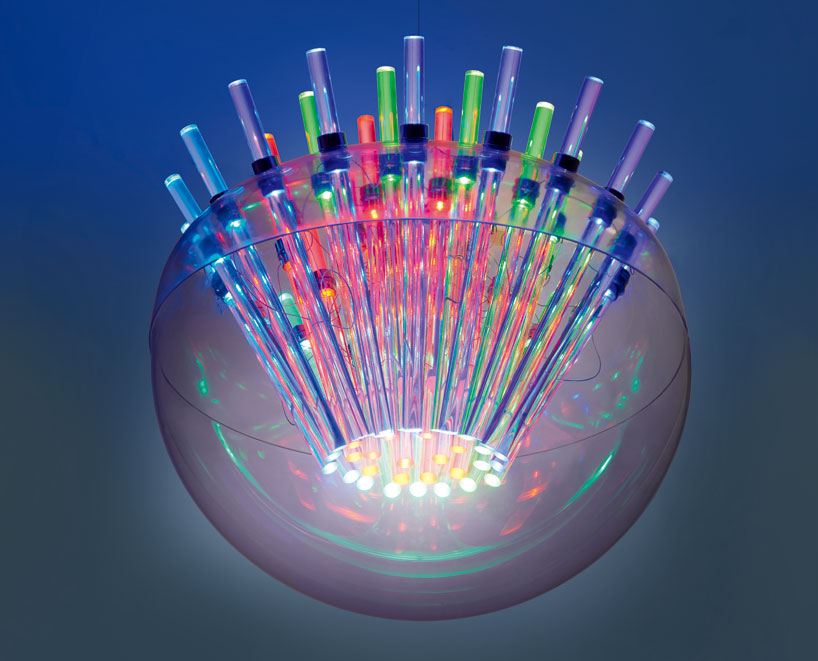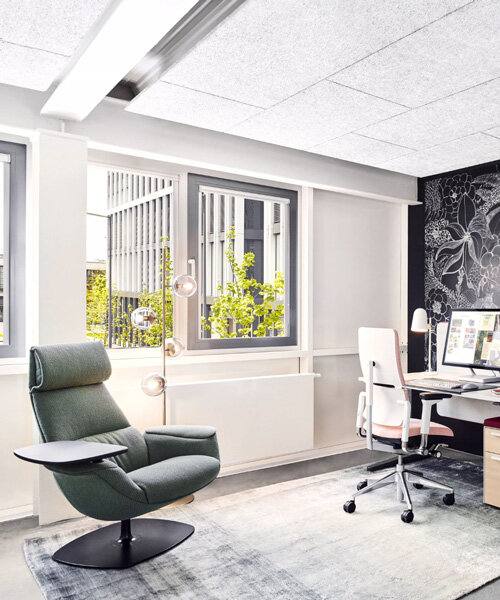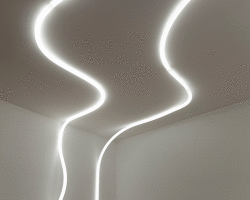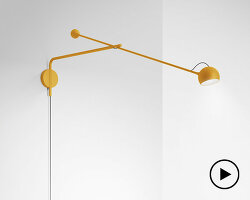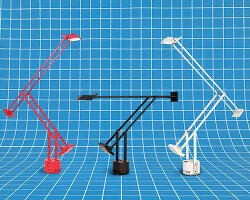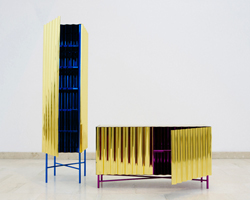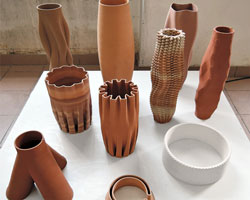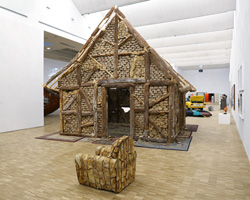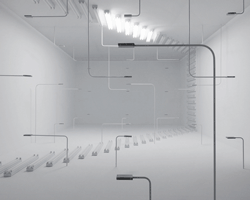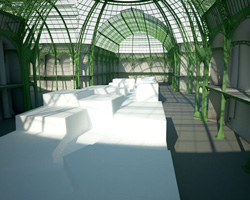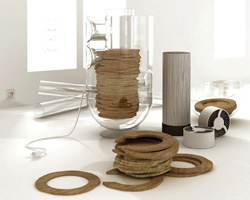philippe rahm simulates visual wavelengths with spectral light for artemide
image courtesy artemide
during milan design week 2015, philippe rahm presents ‘spectral light’ for artemide as a representation of visual wavelengths that are required to see, grow and photosynthesize. ‘our work explores the infinitely small.’ rahm says. ‘we begin by analyzing the biological, or the chemical spectra, then decompose reality into electromagnetic or chemical particles, then recompose it, but with a specific number of its elements — not all of them. our design technique has a sort of rational brightness of the enlightenment. it is close to a neutral and objective ecriture blanche, with a lack of narrative, but from which emerges something magical, a ‘disturbing unreality’, related to ‘a further realism more than a deliberate fiction,’ as gerard genette said about robbe-grillet.’
throughout the past twenty years, the lighting industry has begun to address the composition of the artificial electromagnetic light spectrum and the wave-lengths emitted, mainly because of health and biology, energy saving, and the prevention of global warming. the third reason is linked to the technical development of artificial lighting: the physical characteristic of electroluminescent lighting (LED) to compose light by additive synthesis of electromagnetic rays, by an addition of monochromatic wavelengths, because of the characteristics of different LED semiconductors to emit a single wavelength.
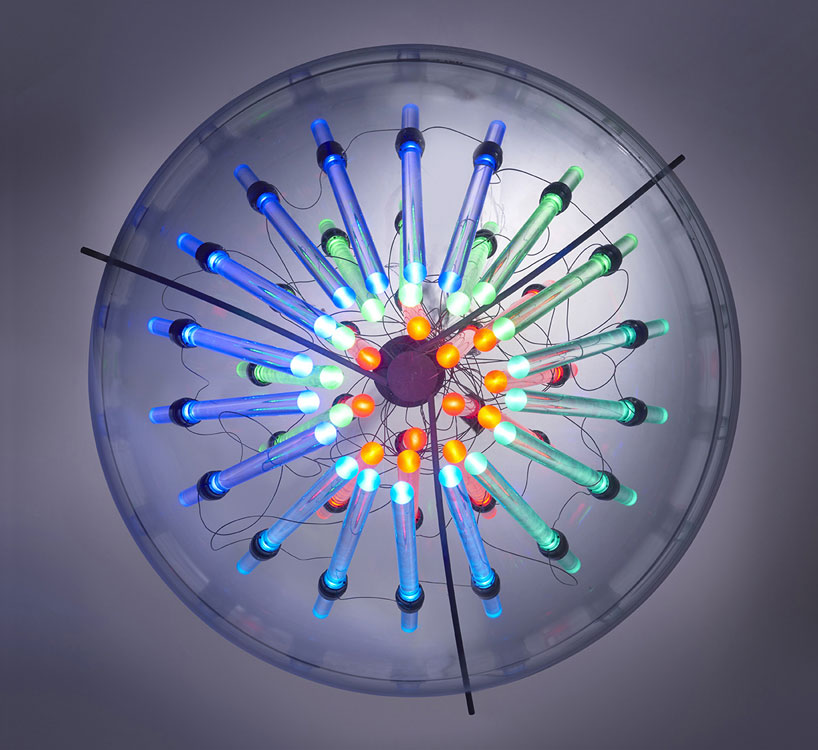
the design of light spectra combine specific and distinct wavelengths
image courtesy artemide
before these considerations, the spectrum produced by artificial lights was caused by the consequence of materials and techniques used. the incandescent tungsten filament produced poor light in the blue spectrum, but extremely rich light in the the red and infrared spectrum. fluorescent lights did not produce a full and continuous electromagnetic spectrum, but a discontinuous and fragmented radiation with limited peaks and wavelengths in the visible spectrum, resulting in the absence of certain colors.
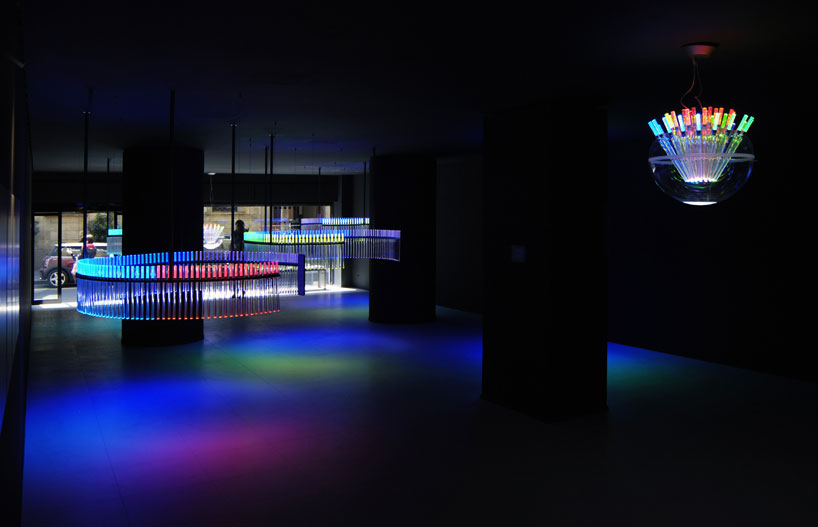
installation view at artemide showroom during milan design week
image © adriano mauri / designboom
‘our method of design, for architecture or industrial design, is to no longer work with the whole, but rather to decompose, disintegrate, and crumble it into a multitude of microscopic particles of heat, vapor, light, and sound, which are disunited from their whole, ie. atomized.’ says rahm.
‘the space is no longer a visible, solid, and tactile macroscopic block. instead, it expands, diffracts, and opens itself to the infinitely small and invisible. we proceed by decomposition, dissociation of the ‘whole’ into elements, and then recompose, but with a certain number of components according to other hierarchies, updated priorities, and new needs. instead of following gestalt psychology, which opposes a holistic view by stating ‘the whole is different and not reducible to the sum of its parts,’ we postulate that the isolated parts are more interesting and more relevant than the whole.’
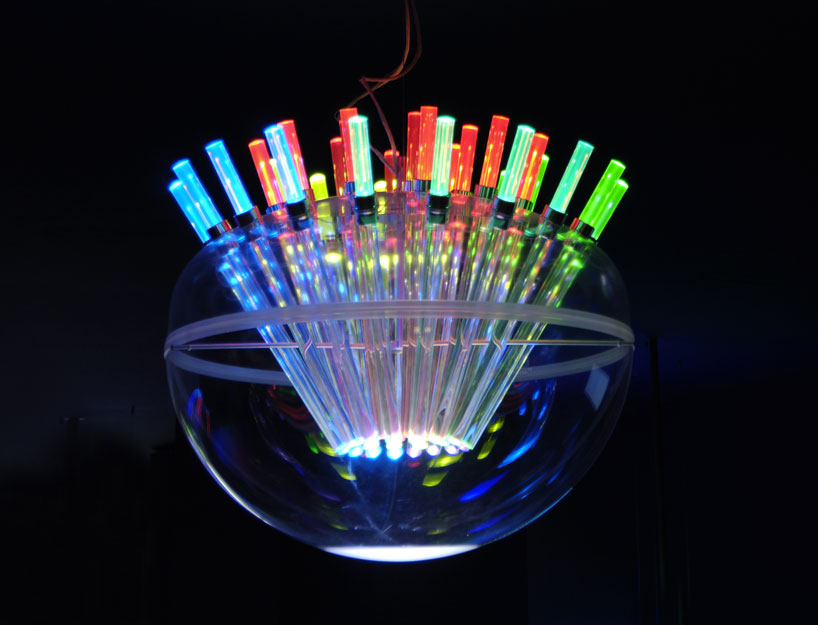
wavelengths of spectra that are required to see, to grow and to photosynthesize
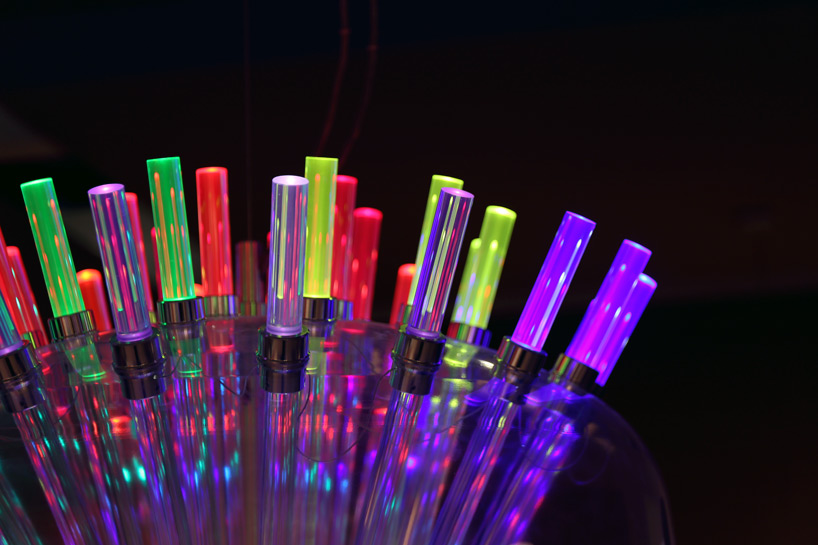
image © designboom
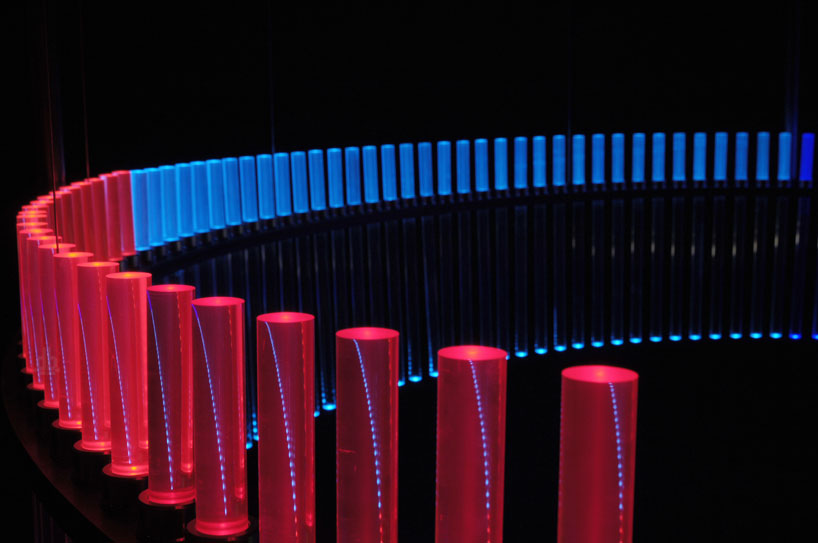
image © adriano mauri / designboom
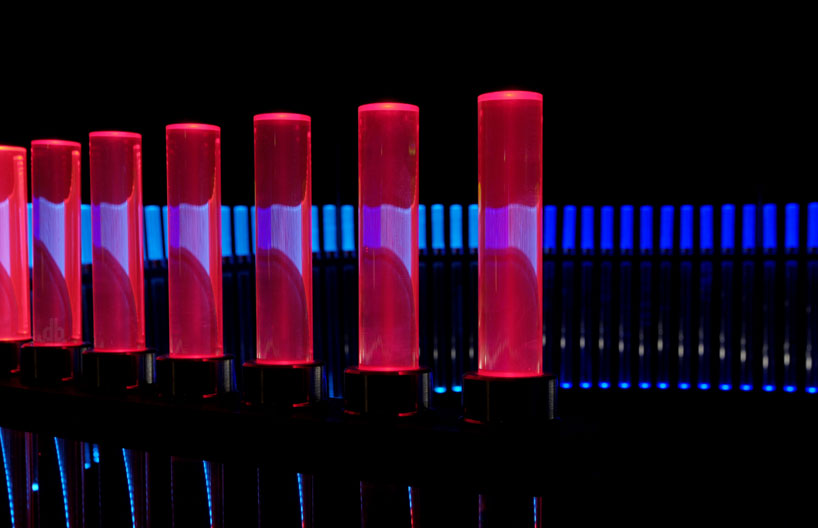
image © adriano mauri / designboom
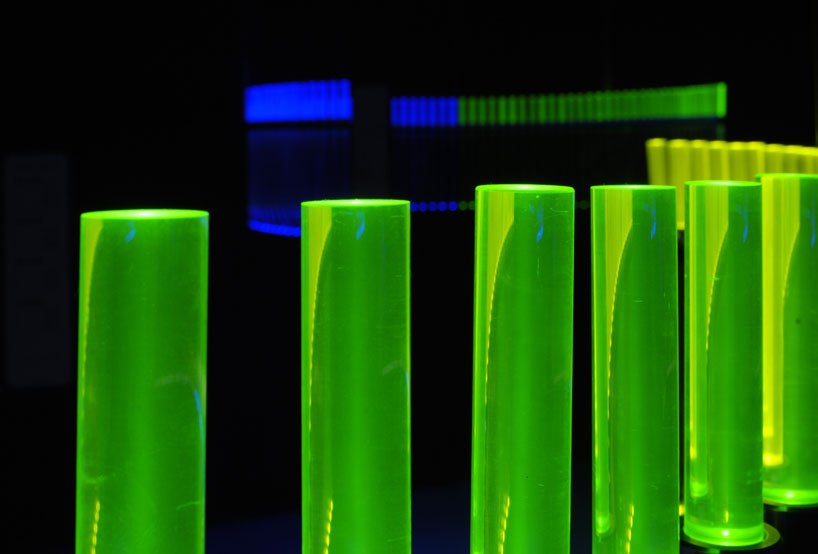
image © adriano mauri / designboom
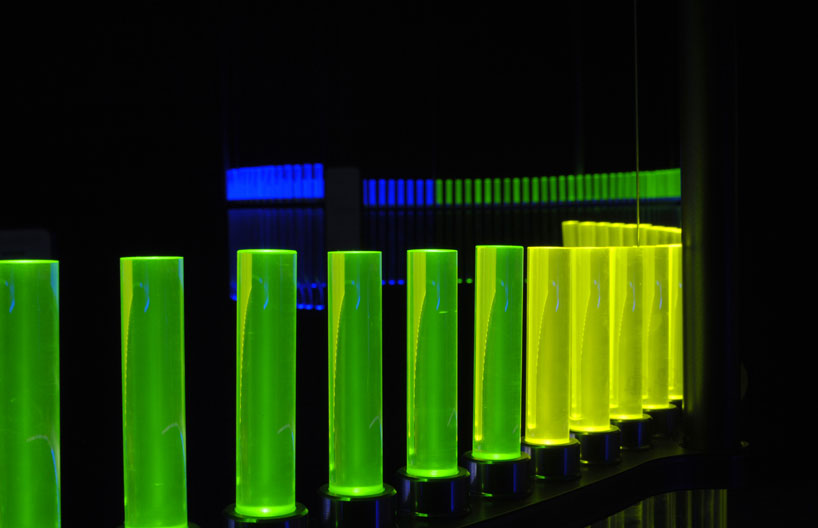
image © adriano mauri / designboom
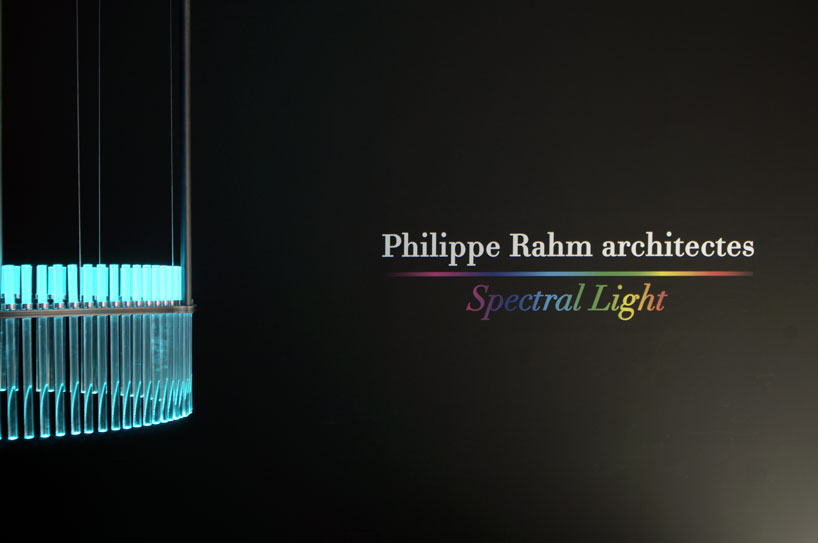
image © adriano mauri / designboom
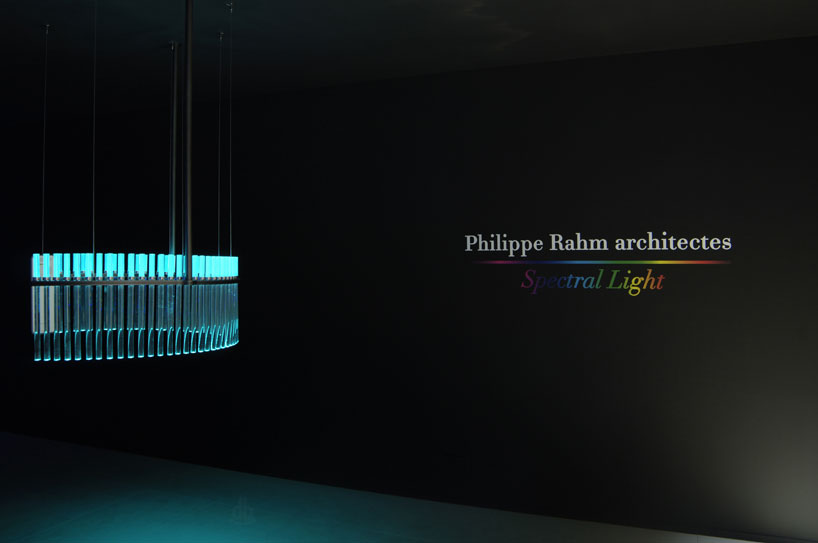
image © adriano mauri / designboom
